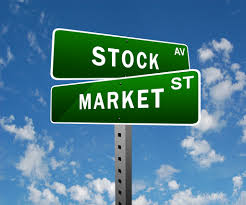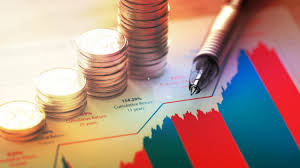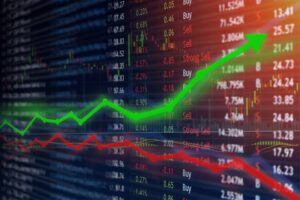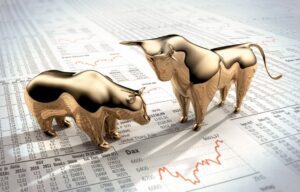
The History of Stock Markets: From Ancient Trade to Modern Finance
Contents
- 1 History of stock market performance
- 1.1 The History of Stock Markets: From Ancient Trade to Modern Finance
- 1.1.1 The Origins: Ancient Trading and the Birth of Commerce
- 1.1.2 The Birth of Stock Markets: From Bonds to Shares
- 1.1.3 The Expansion of Stock Markets: The Spread to Europe and America
- 1.1.3.1 1. London Stock Exchange: The Hub of British Commerce
- 1.1.3.2 2. The New York Stock Exchange: America’s Financial Powerhouse
- 1.1.3.3 3. The Paris Bourse and Other European Exchanges
- 1.1.3.4 1. Industrialization and the Rise of Corporations
- 1.1.3.5 2. The Great Depression and Market Regulation
- 1.1.3.6 3. Post-War Boom and the Rise of Global Markets
- 1.1.3.7 1. The Advent of Electronic Trading
- 1.1.3.8 2. The Dot-Com Boom and Bust
- 1.1.3.9 3. Global Financial Crisis and Market Recovery
- 1.1.4 The Modern Era: High-Frequency Trading and Cryptocurrencies
- 1.1.5 Conclusion
- 1.1.6 FAQs:
- 1.1.6.1 1.What is the oldest stock market in the world?
- 1.1.6.2 2.How did the concept of shares originate?
- 1.1.6.3 3.What was the Buttonwood Agreement?
- 1.1.6.4 4.How did the Great Depression impact stock markets?
- 1.1.6.5 5.What is high-frequency trading?
- 1.1.6.6 6.How has electronic trading changed stock markets?
- 1.1.6.7 7.What role did the dot-com boom play in stock market history?
- 1.1.6.8 8.What is the significance of Bitcoin in the history of stock markets?
- 1.1.6.9 9.How do stock markets contribute to economic growth?
- 1.1.6.10 10.What challenges do modern stock markets face?
- 1.1 The History of Stock Markets: From Ancient Trade to Modern Finance
- 2 History of stock market performance
History of stock market performance
The History of Stock Markets: From Ancient Trade to Modern Finance
The stock market, as we know it today, is a complex and integral part of the global economy. But it wasn’t always this way. The history of stock markets is a story of innovation, economic development, and the human drive for profit. This journey spans centuries, from ancient times when traders bartered goods, to the modern-day electronic exchanges that handle trillions of dollars in transactions. In this article, we’ll explore the evolution of stock markets, the key milestones in their development, and how they have come to play a crucial role in the world economy.


The Origins: Ancient Trading and the Birth of Commerce
1. Bartering and Early Trade Systems
Before the concept of a stock market existed, trade was the primary means by which goods and services were exchanged. In ancient civilizations like Mesopotamia, Egypt, and Greece, bartering was common. People traded goods directly—grain for livestock, tools for clothing—based on mutual need. This system, while effective, was limited by its lack of standardization and the difficulty of matching needs between traders.
2. The First Markets and the Rise of Currency
As societies grew, so did the need for more efficient trade systems. The introduction of currency revolutionized commerce by providing a common medium of exchange. The first known coins appeared around 600 BCE in Lydia (modern-day Turkey). These coins made it easier to value goods and facilitated the rise of marketplaces where traders could buy and sell a wide array of products.


1. The Venetian Influence: The First Bonds
The concept of investing in something beyond physical goods can be traced back to 12th century Venice. The Venetian government issued bonds to fund wars, offering citizens a way to invest in their government’s success. These bonds were the first form of government debt traded among citizens, a precursor to modern bonds.
The true birth of the stock market came with the establishment of the Dutch East India Company (VOC) in 1602. The VOC was the first company to issue shares of stock to the public. Investors could buy shares and own a portion of the company, entitling them to a share of the profits. This innovation allowed the VOC to raise large amounts of capital and laid the foundation for the modern stock market.
3. The Amsterdam Stock Exchange: The World’s First Official Market
The trading of VOC shares led to the establishment of the Amsterdam Stock Exchange in 1602, the world’s first official stock exchange. Here, investors could buy and sell shares of the VOC and other companies, as well as government bonds. The exchange introduced many concepts still used today, such as short selling and market speculation.


The Expansion of Stock Markets: The Spread to Europe and America
1. London Stock Exchange: The Hub of British Commerce
The success of the Amsterdam Stock Exchange inspired the creation of other exchanges across Europe. In 1698, the London Stock Exchange (LSE) was established. Initially, trading took place in coffeehouses where brokers met to buy and sell shares. The LSE became the center of British commerce and played a key role in financing the British Empire’s expansion.
2. The New York Stock Exchange: America’s Financial Powerhouse
The New York Stock Exchange (NYSE) was founded in 1792 under the Buttonwood Agreement, signed by 24 brokers outside of 68 Wall Street. The NYSE grew rapidly, becoming the largest stock exchange in the world by the late 19th century. It was instrumental in financing the industrialization of the United States and continues to be a dominant force in global finance.
3. The Paris Bourse and Other European Exchanges
In France, the Paris Bourse was established in 1724, becoming a major financial center in Europe. Other European cities like Frankfurt and Milan also established their own exchanges, each contributing to the growth of global trade and finance.


The 19th and 20th Centuries: The Industrial Revolution and Globalization
1. Industrialization and the Rise of Corporations
The 19th century saw the rise of industrialization, which created new opportunities for investment. Corporations needed capital to fund large-scale manufacturing operations, infrastructure projects, and technological innovations. Stock markets provided a platform for these companies to raise funds by selling shares to the public.
2. The Great Depression and Market Regulation
The stock market crash of 1929, which led to the Great Depression, highlighted the need for regulation. The U.S. government responded by creating the Securities and Exchange Commission (SEC) in 1934 to oversee and regulate the stock market, ensuring transparency and protecting investors.
3. Post-War Boom and the Rise of Global Markets
After World War II, stock markets around the world experienced significant growth. The economic boom of the 1950s and 1960s led to increased investment and the expansion of stock exchanges. The introduction of computers in the 1970s revolutionized trading, making it faster and more efficient. The 20th century also saw the rise of international exchanges and the globalization of finance.


The Digital Age: The Transformation of Stock Markets
1. The Advent of Electronic Trading
The late 20th and early 21st centuries witnessed a dramatic transformation in how stock markets operate. The introduction of electronic trading platforms replaced the traditional open-outcry system, where traders shouted orders across a trading floor. Electronic trading allowed for faster execution of trades, greater transparency, and broader access to markets.
2. The Dot-Com Boom and Bust
The rise of the internet in the 1990s led to the dot-com boom, where investors poured money into technology stocks, driving valuations to unprecedented levels. However, the bubble burst in 2000, leading to significant losses and a reassessment of how technology companies were valued.
3. Global Financial Crisis and Market Recovery
The 2008 global financial crisis was another pivotal moment in stock market history. Triggered by the collapse of the U.S. housing market and the subsequent failure of major financial institutions, the crisis led to a severe market downturn. Governments and central banks around the world intervened with stimulus packages and regulatory reforms, leading to a slow but steady recovery.


The Modern Era: High-Frequency Trading and Cryptocurrencies
1. High-Frequency Trading: Speed and Efficiency
High-frequency trading (HFT) emerged in the early 2000s as a major force in the stock markets. Using algorithms and supercomputers, HFT firms execute large volumes of trades at incredibly high speeds, often within milliseconds. While HFT has improved market liquidity, it has also raised concerns about market stability and fairness.
2. The Rise of Cryptocurrencies and Blockchain Technology
The introduction of Bitcoin in 2009 marked the beginning of a new era in finance. Cryptocurrencies, powered by blockchain technology, offer an alternative to traditional stock markets. While still in their infancy, digital assets have attracted significant attention from investors and are seen as a potential disruptor to traditional finance.


Conclusion
The history of stock markets is a testament to the evolution of commerce and finance. From ancient bartering systems to modern electronic exchanges, stock markets have continually adapted to meet the needs of investors and businesses. Today, they are a critical component of the global economy, enabling capital formation, wealth creation, and economic growth.
As we look to the future, the stock market will continue to evolve, shaped by technological advancements, regulatory changes, and the ever-changing dynamics of the global economy. Understanding the history of stock markets not only provides valuable insights into their current operation but also helps us anticipate how they may evolve in the years to come.
FAQs:
1.What is the oldest stock market in the world?
A. The Amsterdam Stock Exchange, established in 1602, is considered the oldest stock market in the world.
A. The Dutch East India Company (VOC) was the first company to issue shares to the public, allowing investors to own a portion of the company.
3.What was the Buttonwood Agreement?
A. The Buttonwood Agreement, signed in 1792, laid the foundation for the New York Stock Exchange (NYSE).
4.How did the Great Depression impact stock markets?
A. The Great Depression led to significant market losses and prompted the creation of regulatory bodies like the U.S. Securities and Exchange Commission (SEC).
5.What is high-frequency trading?
A. High-frequency trading (HFT) involves the use of algorithms to execute trades at extremely high speeds, often within milliseconds.
6.How has electronic trading changed stock markets?
A. Electronic trading has increased the speed and efficiency of trading, making markets more accessible and transparent.
7.What role did the dot-com boom play in stock market history?
A. The dot-com boom of the 1990s led to inflated valuations of technology stocks, culminating in a market crash in 2000.
8.What is the significance of Bitcoin in the history of stock markets?
A. Bitcoin, introduced in 2009, represents a new form of digital asset trading, offering an alternative to traditional stock markets.
9.How do stock markets contribute to economic growth?
A. Stock markets enable companies to raise capital, which can be used for expansion, innovation, and job creation, driving economic growth.
10.What challenges do modern stock markets face?
A. Modern stock markets face challenges such as market volatility, regulatory scrutiny, and the potential impact of emerging technologies like blockchain and AI.
History of stock market performance
What is the Stock Market? A Comprehensive Guide for Beginners





















4 comments